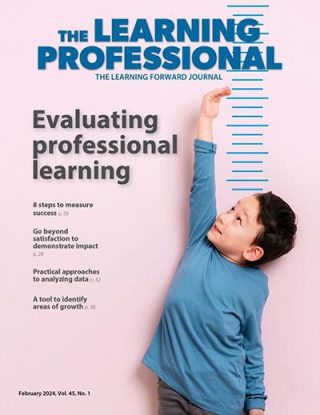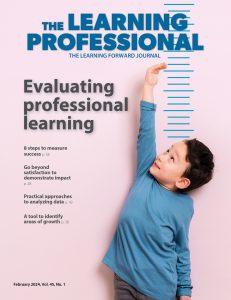Standards, multiple sources of data, teacher collaboration deemed essential
DALLAS-March 3, 2010-Findings from a newly released survey of more than 40,000 American teachers emphasize the need to advance NSDC’s new definition for professional learning at the federal level through the ESEA reauthorization process as well as at the state and local policy levels. In Primary sources: America’s teachers on America’s schools: A project of Scholastic and the Bill & Melinda Gates Foundation, teachers made their priorities crystal clear as they defined five solutions for the challenges school face.
The vast majority of teachers responding indicated that preparation for life beyond high school is the most important purpose of schools, with 71% saying that schools must prepare students for careers in the 21st century. However, teachers also indicated that schools don’t have a high degree of success in meeting these goals. Just 28% of teachers rate the academic achievement of students at their schools as excellent, and less than half of high school teachers believe that 75% of their students leave school prepared for 2- or 4-year colleges. Teachers in high-poverty schools perceive bigger challenges, yet teachers across all schools share a consistent view of potential solutions.
“High quality professional learning is essential to address the challenges identified by the teachers who responded to this survey,” stated Stephanie Hirsh, executive director of the National Staff Development Council. “The components of NSDC’s definition of professional development directly support and make possible the effective implementation of the identified solutions to schools’ challenges.”
The solutions outlined in the survey results are:
- Establish clear standards, common across states.
- Use multiple measures to evaluate student performance.
- Innovate to reach today’s student.
- Accurately measure teacher performance and provide non-monetary rewards.
- Bridge school & home to raise student achievement.
“Looking closely at just one of these proposed solutions – using student data for addressing and evaluating student progress – is a complex and critical teaching skill. Through collaborative professional learning, teachers learn from and support each other in creating and using multiple types of assessments to identify student strengths and weaknesses in order to adapt and differentiate their instruction,” noted Hirsh.
When respondents to the survey identified the factors that would improve teacher retention, 89% said that time for teachers to collaborate is either “absolutely essential” or “very important.” The only factor receiving higher responses was supportive leadership. Professional development relevant to personal and school goals was also perceived as important, with 85% indicating it is “absolutely essential” or “very important.” Higher salaries and pay tied to performance were both less important to the respondents.
“I am both encouraged and challenged by these findings,” said Hirsh. “I am proud to see that this validates NSDC’s positions on professional development – that it should be designed to support individual and team learning to improve collective knowledge and skills, and based on a cycle of continuous school improvement and learning. At the same time, the challenges these teachers face are immediate and difficult, given their passion to move students toward lifelong success. I hope this information can help us to create a sense of urgency around supporting schools, and that teachers, schools, and policymakers will join us in advancing effective professional learning.”
Download the full study report at https://www.scholastic.com/primarysources/download.asp.







